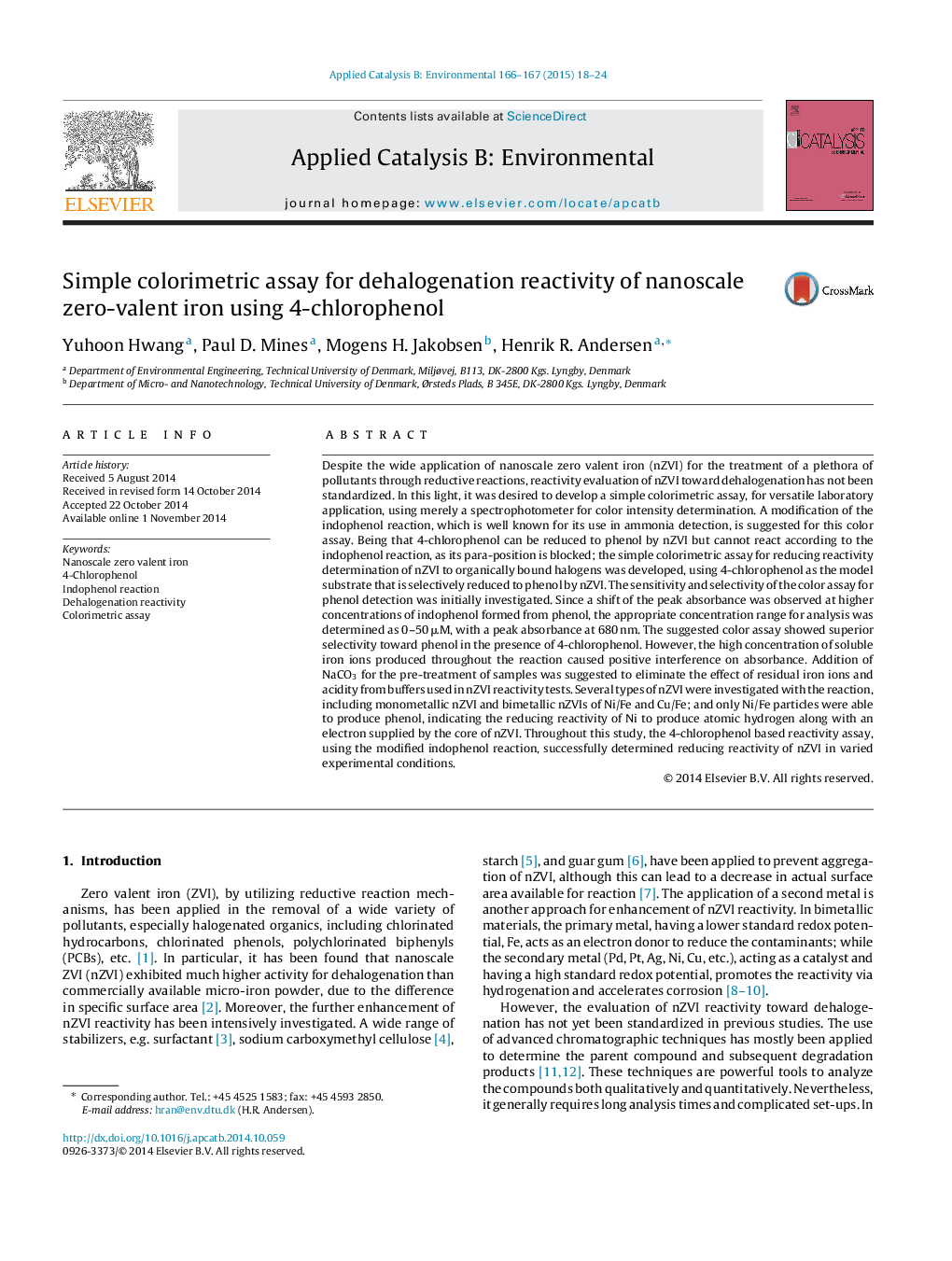| Article ID | Journal | Published Year | Pages | File Type |
|---|---|---|---|---|
| 45692 | Applied Catalysis B: Environmental | 2015 | 7 Pages |
•Colorimetric assay developed for reductive de-chlorination based on 4-chlorphenol.•Color development through indophenol formation occurs only by the product, phenol.•Low de-chlorination activity of pure nZVI observed, which is improved by nickel addition.•Interference of color reading by iron ions eliminated by sodium carbonate addition.
Despite the wide application of nanoscale zero valent iron (nZVI) for the treatment of a plethora of pollutants through reductive reactions, reactivity evaluation of nZVI toward dehalogenation has not been standardized. In this light, it was desired to develop a simple colorimetric assay, for versatile laboratory application, using merely a spectrophotometer for color intensity determination. A modification of the indophenol reaction, which is well known for its use in ammonia detection, is suggested for this color assay. Being that 4-chlorophenol can be reduced to phenol by nZVI but cannot react according to the indophenol reaction, as its para-position is blocked; the simple colorimetric assay for reducing reactivity determination of nZVI to organically bound halogens was developed, using 4-chlorophenol as the model substrate that is selectively reduced to phenol by nZVI. The sensitivity and selectivity of the color assay for phenol detection was initially investigated. Since a shift of the peak absorbance was observed at higher concentrations of indophenol formed from phenol, the appropriate concentration range for analysis was determined as 0–50 μM, with a peak absorbance at 680 nm. The suggested color assay showed superior selectivity toward phenol in the presence of 4-chlorophenol. However, the high concentration of soluble iron ions produced throughout the reaction caused positive interference on absorbance. Addition of NaCO3 for the pre-treatment of samples was suggested to eliminate the effect of residual iron ions and acidity from buffers used in nZVI reactivity tests. Several types of nZVI were investigated with the reaction, including monometallic nZVI and bimetallic nZVIs of Ni/Fe and Cu/Fe; and only Ni/Fe particles were able to produce phenol, indicating the reducing reactivity of Ni to produce atomic hydrogen along with an electron supplied by the core of nZVI. Throughout this study, the 4-chlorophenol based reactivity assay, using the modified indophenol reaction, successfully determined reducing reactivity of nZVI in varied experimental conditions.
Graphical abstractFigure optionsDownload full-size imageDownload as PowerPoint slide
